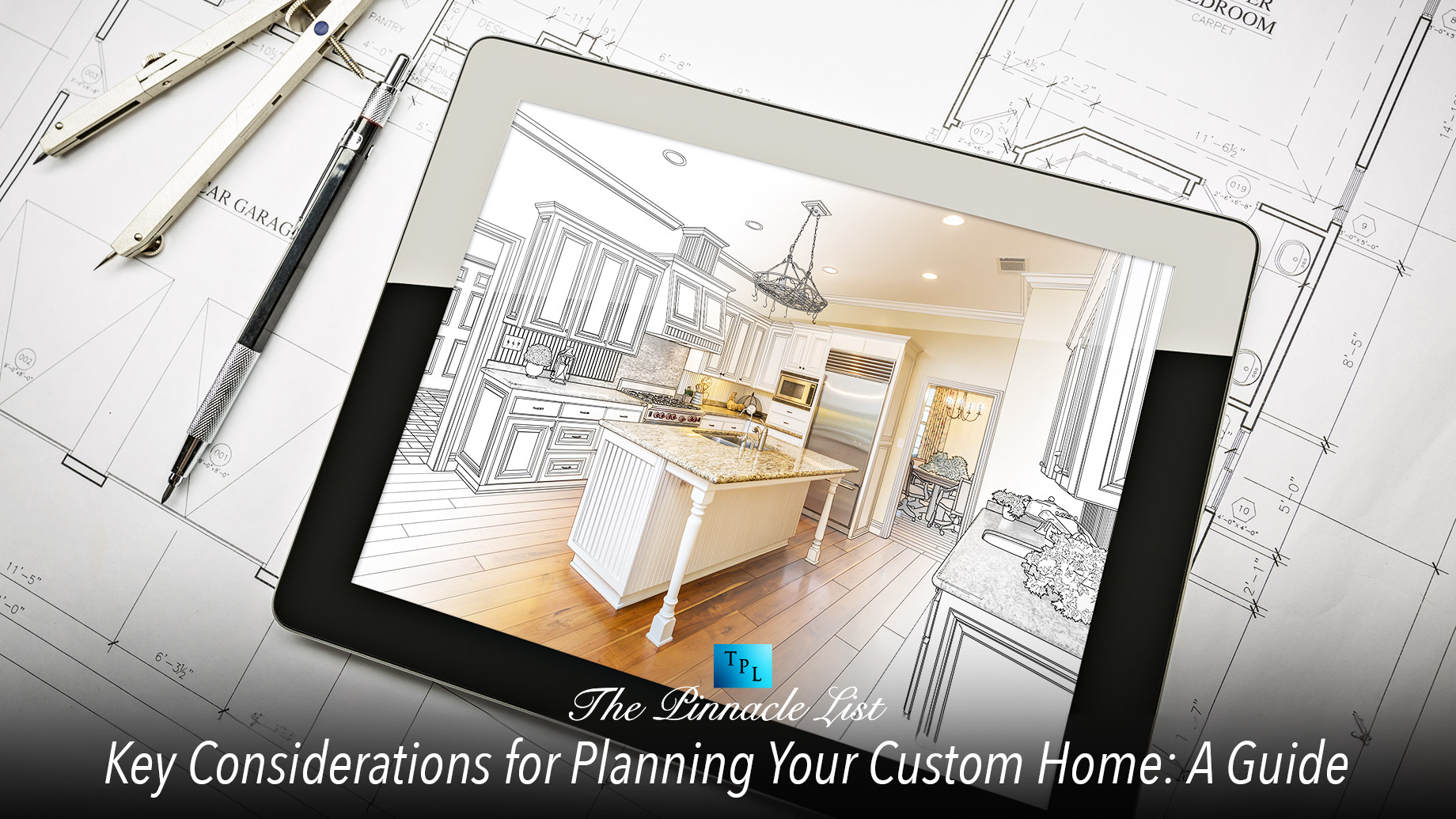
Often, making a custom home seems like a far-fetched dream realized only by the filthy rich. However, in San Diego, you too can own a custom home thanks to the rise of budget-friendly contractors and suppliers. However, when you’re planning a custom home, there are certain considerations you must keep in mind. A custom home-building project requires you to keep constant tabs on things and be mindful of every activity being taken. Before you dive in, here are some key points to consider.
When it comes to building a custom home, the planning phase is crucial. From envisioning your dream property to selecting the right floor plan and materials, every decision during this stage sets the foundation for success. In this guide, we will discuss key considerations to help you navigate through the planning process.
1. Establish Your Vision
Before diving into the nitty-gritty details, take a step back and establish your vision for your custom home. Ask yourself what you want to achieve with this project. Consider factors such as size, layout, architectural style, and design aesthetics. By having a clear vision in mind, it becomes easier to communicate your needs to architects and builders.
2. Set a Budget
Custom homes provide endless possibilities, but they can also become incredibly expensive if not managed well. Establishing a realistic budget is pivotal in ensuring that expectations align with financial capabilities. Take into account all costs associated with building your custom home, including land acquisition, design fees, construction materials, labor expenses, and any hidden or unexpected costs that may arise during the process.
3. Location Matters
When choosing a location for your custom home, there are several factors to consider. Evaluate proximity to schools, work commutes, amenities like grocery stores or recreational areas—the list goes on! Research local zoning laws and restrictions, as they can dictate what you can or cannot build on the property. This stage of planning plays a significant role in defining your overall lifestyle within your new space.
4. Floor Plan Selection
The floor plan of your custom home sets the tone for its functionality and flow. You can opt for an open-concept design that promotes spaciousness or go for compartmentalized rooms that offer maximum privacy and separation between different house areas. Explore various options available online or consult professionals who can provide guidance based on both practicality and personal preferences.
5. Building Materials and Techniques
Selecting the right building materials and construction techniques is essential in ensuring that your custom home stands the test of time. Research and consider various options keeping in mind factors such as durability, energy efficiency, maintenance requirements, cost-effectiveness, and overall design aesthetics. Consult with builders and architects experienced in sustainable building practices to make informed decisions.
6. Energy Efficiency Considerations
With each passing year, energy-efficient homes become increasingly popular due to their long-term cost savings and environmental benefits. Explore renewable energy options like solar panels or incorporate energy-efficient appliances into your custom home’s design. Look for programs or incentives offered by local governments or utility companies that can provide financial support for installing eco-friendly features.
7. Hire Qualified Professionals
Building a custom home is a complex undertaking that requires a skilled team of professionals to ensure a successful outcome. Seek recommendations from friends or family who have undergone similar projects to find architects, builders, contractors, and interior designers with proven track records. Working with reliable professionals minimizes risks, keeps the project on track, and ensures quality workmanship.
8. Plan for Possible Changes
During the planning phase of your custom home build, it’s important to remain flexible. Although you may have a clear vision initially, minor adjustments might be necessary as ideas develop or challenges arise during construction. Building contingencies into your plans not only allows for unforeseen circumstances but also brings peace of mind throughout the project.
9. Maximize Functionality & Storage Space
When planning your custom home’s layout, maximize functionality and optimize storage space. Designating specific areas for storage ensures a clutter-free living environment while enhancing organization and livability in day-to-day life. Utilize innovative storage solutions like built-in cabinets or multipurpose furniture to make the most of every square foot.
10. Communicate Openly & Frequently
Effective communication with all parties involved in your custom home build removes uncertainties and ensures that everyone is on the same page. From the architect to the builder, transparent and regular communication minimizes misunderstandings, addresses concerns promptly, and keeps the project moving smoothly toward completion.
Conclusion
Building a custom home is a thrilling and rewarding experience, but it requires careful planning to achieve the desired outcome. By following these key considerations during the planning phase, you can set yourself up for success and avoid costly mistakes or regrets later on. First, establish your vision and have a clear idea of what you want to achieve with your custom home. This will guide your decision-making process and help you communicate your needs effectively.